Study on Mechanical Properties and Micro Characterization of Fibre Reinforced Ecological Cementitious Coal Gangue Materials
Abstract
:1. Introduction
2. Materials and Methods
2.1. Testing Material
2.2. Test Method
3. Results and Analysis
3.1. Unconfined Compressive Strength Test
3.1.1. Test Results
3.1.2. Test Result Analysis
3.2. Three-Point Bending Tests
3.2.1. Test Result
3.2.2. Test Result Analysis
3.3. Analysis of Sample Energy Consumption Characteristics
4. Microscopic Characterization of the Composite Materials
4.1. Overall Morphology Analysis
4.2. Ductility-Strengthening Mechanism Analysis
5. Conclusions
- (1)
- Based the BBD response surface design principle and orthogonal test design, the effects of various factors on the 28 d UCS and flexural strength of the fiber-reinforced EGCGM were analyzed, respectively. The order of significance from largest to smallest was as follows: sodium hydroxide content > fiber length > fiber content. In the unconfined compressive strength test: when the NaOH content is 3%, the fiber length is 9 mm, and the fiber content is 5‰, the 28d unconfined compressive strength of the sample reaches the maximum (9.34 MPa). In the three-point bending test, the local optimal combination of the test: the sodium hydroxide content is 3%, the fiber length is 9 mm, and the fiber content is 5‰.
- (2)
- With the help of microscopic scanning technology, it was found that the amorphous eco-gel coagulation products formed by the reaction of slag and fly ash in an alkaline environment were filled between the coal gangue particles and fibers, and several polymerization products accumulated to form a honeycomb network topology. When resisting external forces, the structure could be dispersed to bear external forces from all directions, with good structural stability and uniform buffer strength.
- (3)
- The distribution pattern of fibers in the ecological cementitious matrix could be divided into single embedded and reticular occurrences. When crack initiation and development connection occurred in the matrix, the fiber produced a crack resistance effect by inhibiting the matrix, and by bridging during the failure process, the brittleness of the ecological cementitious coal gangue matrix was enhanced, which promoted its ductility.
Author Contributions
Funding
Informed Consent Statement
Data Availability Statement
Acknowledgments
Conflicts of Interest
References
- Li, J.; Wang, J. Comprehensive utilization and environmental risks of coal gangue: A review. J. Clean. Prod. 2019, 239, 117946. [Google Scholar] [CrossRef]
- Gu, L.; Shen, Y.; Wang, N.; Song, S.; Nie, W. Potential hazard assessment and pollution characteristics of soil heavy metals in coal gangue accumulation area. J. Xi’an Univ. Sci. Technol. 2022, 42, 942–949. [Google Scholar] [CrossRef]
- Tripathy, S.K.; Dasu, J.; Murthy, Y.R.; Kapure, G.; Pal, A.R.; Filippov, L. Utilisation perspective on water quenched and air-cooled blast furnace slags. J. Clean. Prod. 2020, 262, 121354. [Google Scholar] [CrossRef]
- Zhao, X.-Y.; Yang, J.-Y.; Ning, N.; Yang, Z.-S. Chemical stabilization of heavy metals in municipal solid waste incineration fly ash: A review. Environ. Sci. Pollut. Res. 2022, 29, 40384–40402. [Google Scholar] [CrossRef]
- Blaha, U.; Sapkota, B.; Appel, E.; Stanjek, H.; Rösler, W. Micro-scale grain-size analysis and magnetic properties of coal-fired power plant fly ash and its relevance for environmental magnetic pollution studies. Atmos. Environ. 2008, 42, 8359–8370. [Google Scholar] [CrossRef]
- Ge, J.; Zhu, H.; Li, Z.; Li, W.; Shen, Z.; Hou, J.; Yang, S. Study on the mechanical and durability properties of coal gangue coarse ag-gregate-geopolymer concrete. Mater. Bull. 2021, 35, 218–223. [Google Scholar]
- Zhang, X.; Feng, X.; Wang, Z.; Jian, J.; Chen, S.; Luo, W.; Zhang, C. Experimental study on the physico-mechanical properties and microstructure of foam concrete mixed with coal gangue. Constr. Build. Mater. 2022, 359, 129428. [Google Scholar] [CrossRef]
- Zhu, Y.; Zhu, Y.; Wang, A.; Sun, D.; Liu, K.; Liu, P.; Chu, Y. Valorization of calcined coal gangue as coarse aggregate in concrete. Cem. Concr. Compos. 2021, 121, 104057. [Google Scholar] [CrossRef]
- Wen, P.; Li, J.; He, Z. Application of coal gangue in land reclamation. Coal Technol. 2018, 37, 43–45. [Google Scholar] [CrossRef]
- Li, G.; Hu, Z.; Li, P.; Yuan, D.; Feng, Z.; Wang, W.; Fu, Y. Innovation for sustainable mining: Integrated planning of underground coal mining and mine reclamation. J. Clean. Prod. 2022, 351, 131522. [Google Scholar] [CrossRef]
- Li, M.; Zhang, J.; Li, A.; Zhou, N. Reutilisation of coal gangue and fly ash as underground backfill materials for surface subsidence control. J. Clean. Prod. 2020, 254, 120113. [Google Scholar] [CrossRef]
- Qiu, J.; Cheng, K.; Zhang, R.; Gao, Y.; Guan, X. Study on the influence mechanism of activated coal gangue powder on the properties of filling body. Constr. Build. Mater. 2022, 345. [Google Scholar] [CrossRef]
- Guo, L.; Zhou, M.; Wang, X.; Li, C.; Jia, H. Preparation of coal gangue-slag-fly ash geopolymer grouting materials. Constr. Build. Mater. 2022, 328, 126997. [Google Scholar] [CrossRef]
- Hongqiang, M.; Hongyu, C.; Hongguang, Z.; Yangyang, S.; Yadong, N.; Qingjie, H.; Zetao, H. Study on the drying shrinkage of alkali-activated coal gangue-slag mortar and its mechanisms. Constr. Build. Mater. 2019, 225, 204–213. [Google Scholar] [CrossRef]
- Zhao, Y.; Yang, C.; Li, K.; Qu, F.; Yan, C.; Wu, Z. Toward understanding the activation and hydration mechanisms of composite activated coal gangue geopolymer. Constr. Build. Mater. 2021, 318, 125999. [Google Scholar] [CrossRef]
- Ma, H.; Yi, C.; Chen, H.; Shi, J.; Li, W.; Guo, Y. Property and Cementation Mechanism of Alkali-activated Coal Gangue-slag Cementitious Materials. J. Mater. Res. 2018, 32, 898–904. [Google Scholar]
- Guo, L.; Zhou, M.; Wang, L.; Xie, P.; Zhang, X. Preparation and properties of coal-based solid waste geopolymer grouting materials. J. Build. Mater. 2022, 25, 1092–1100. [Google Scholar]
- Shen, L.; Zhang, J.; Lai, W.; Li, M.; Huo, B. Microstructure and mechanical behaviors of coal gangue—Coal slime water backfill cementitious materials. J. Mater. Res. Technol. 2022, 20, 3772–3783. [Google Scholar] [CrossRef]
- Qiu, J.; Zhou, Y.; Guan, X.; Zhu, M. The influence of fly ash content on ITZ microstructure of coal gangue concrete. Constr. Build. Mater. 2021, 298, 123562. [Google Scholar] [CrossRef]
- Zhang, M.; El-Korchi, T.; Zhang, G.; Liang, J.; Tao, M. Synthesis factors affecting mechanical properties, microstructure, and chemical composition of red mud–fly ash based geopolymers. Fuel 2014, 134, 315–325. [Google Scholar] [CrossRef]
- Fernández-Jiménez, A.; Palomo, A.; Criado, M. Microstructure development of alkali-activated fly ash cement: A descriptive model. Cem. Concr. Res. 2005, 35, 1204–1209. [Google Scholar] [CrossRef]
- UN Environment; Scrivener, K.L.; John, V.M.; Gartner, E.M. Eco-efficient cements: Potential economically viable solutions for a low-CO2 cement-based materials industry. Cem. Concr. Res. 2018, 114, 2–26. [Google Scholar] [CrossRef]
- Ismail, I.; Bernal, S.A.; Provis, J.L.; Hamdan, S.; van Deventer, J.S.J. Drying-induced changes in the structure of alkali-activated pastes. J. Mater. Sci. 2013, 48, 3566–3577. [Google Scholar] [CrossRef]
- Xu, J.; Li, W.; Fan, F.; Bai, E. Study on impact mechanical properties of geopolymer concrete. Vib. Impact 2009, 28, 46–50+194. [Google Scholar] [CrossRef]
- Khanzada, F.A.; Nazir, K.; Ishtiaq, M.; Javed, M.F.; Kashif-Ur-Rehman, S.; Aslam, F.; Musarat, M.A.; Usanova, K.I. Concrete by Preplaced Aggregate Method Using Silica Fume and Polypropylene Fibres. Materials 2022, 15, 1997. [Google Scholar] [CrossRef]
- Sucharda, O.; Marcalikova, Z.; Gandel, R. Microstructure, Shrinkage, and Mechanical Properties of Concrete with Fibers and Experiments of Reinforced Concrete Beams without Shear Reinforcement. Materials 2022, 15, 5707. [Google Scholar] [CrossRef]
- Sun, X.; Zhao, Y.; Xing, J.; Qiu, J.; Li, H. Preparation of filling cementitious material by alkali-activated blast furnace slag-fly ash. Metal Mine 2016, 11, 189–192. [Google Scholar]
- Karalar, M.; Özkılıç, Y.O.; Aksoylu, C.; Sabri, M.M.S.; Beskopylny, A.N.; Stel’Makh, S.A.; Shcherban, E.M. Flexural behavior of reinforced concrete beams using waste marble powder towards application of sustainable concrete. Front. Mater. 2022, 9. [Google Scholar] [CrossRef]
- Beskopylny, A.N.; Shcherban’, E.M.; Stel’Makh, S.A.; Meskhi, B.; Shilov, A.A.; Varavka, V.; Evtushenko, A.; Özkılıç, Y.O.; Aksoylu, C.; Karalar, M. Composition Component Influence on Concrete Properties with the Additive of Rubber Tree Seed Shells. Appl. Sci. 2022, 12, 11744. [Google Scholar] [CrossRef]
- Basaran, B.; Kalkan, I.; Aksoylu, C.; Özkılıç, Y.O.; Sabri, M.M.S. Effects of Waste Powder, Fine and Coarse Marble Aggregates on Concrete Compressive Strength. Sustainability 2022, 14, 14388. [Google Scholar] [CrossRef]
- Aksoylu, C.; Özkılıç, Y.O.; Hadzima-Nyarko, M.; Işık, E.; Arslan, M.H. Investigation on Improvement in Shear Performance of Reinforced-Concrete Beams Produced with Recycled Steel Wires from Waste Tires. Sustainability 2022, 14, 13360. [Google Scholar] [CrossRef]
- Karalar, M.; Özkılıç, Y.O.; Deifalla, A.F.; Aksoylu, C.; Arslan, M.H.; Ahmad, M.; Sabri, M.M.S. Improvement in Bending Performance of Reinforced Concrete Beams Produced with Waste Lathe Scraps. Sustainability 2022, 14, 12660. [Google Scholar] [CrossRef]
- Özkılıç, Y.O.; Aksoylu, C.; Arslan, M.H. Experimental and numerical investigations of steel fiber reinforced concrete dapped-end purlins. J. Build. Eng. 2021, 36, 102119. [Google Scholar] [CrossRef]
- GB/T 3356-2014.2014-07-24; Test Method for Flexural Properties of Oriented Fiber Reinforced Polymer Matrix Composites. China Building Materials Federation, China Aviation Industry Corporation: Beijing, China, 2014.
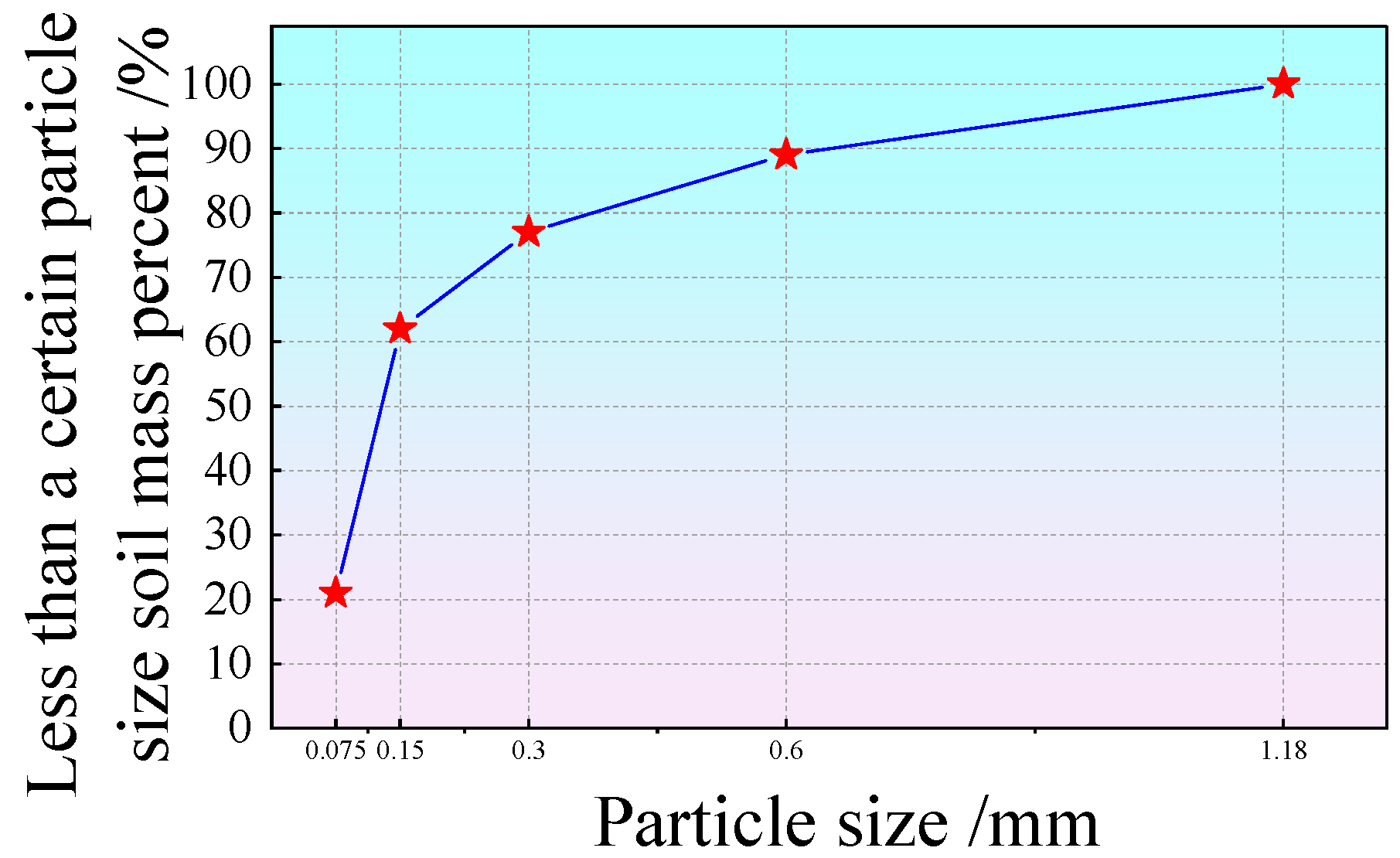
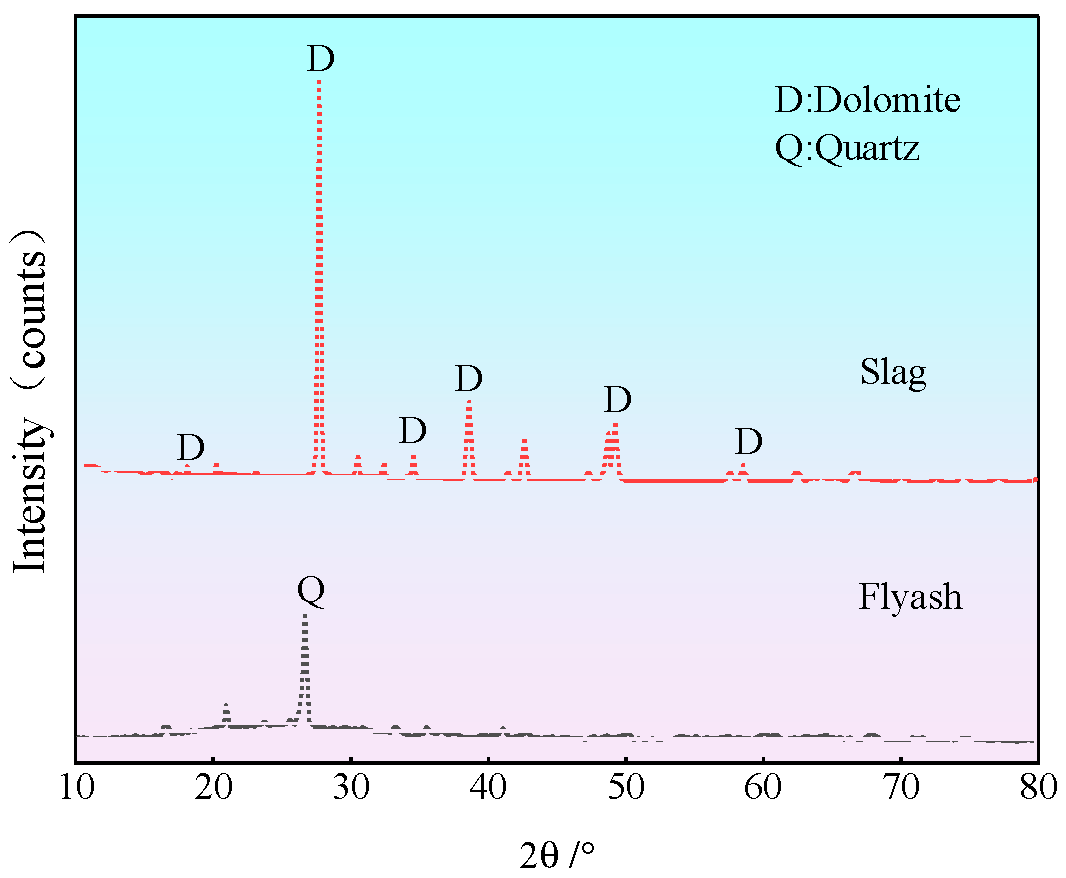
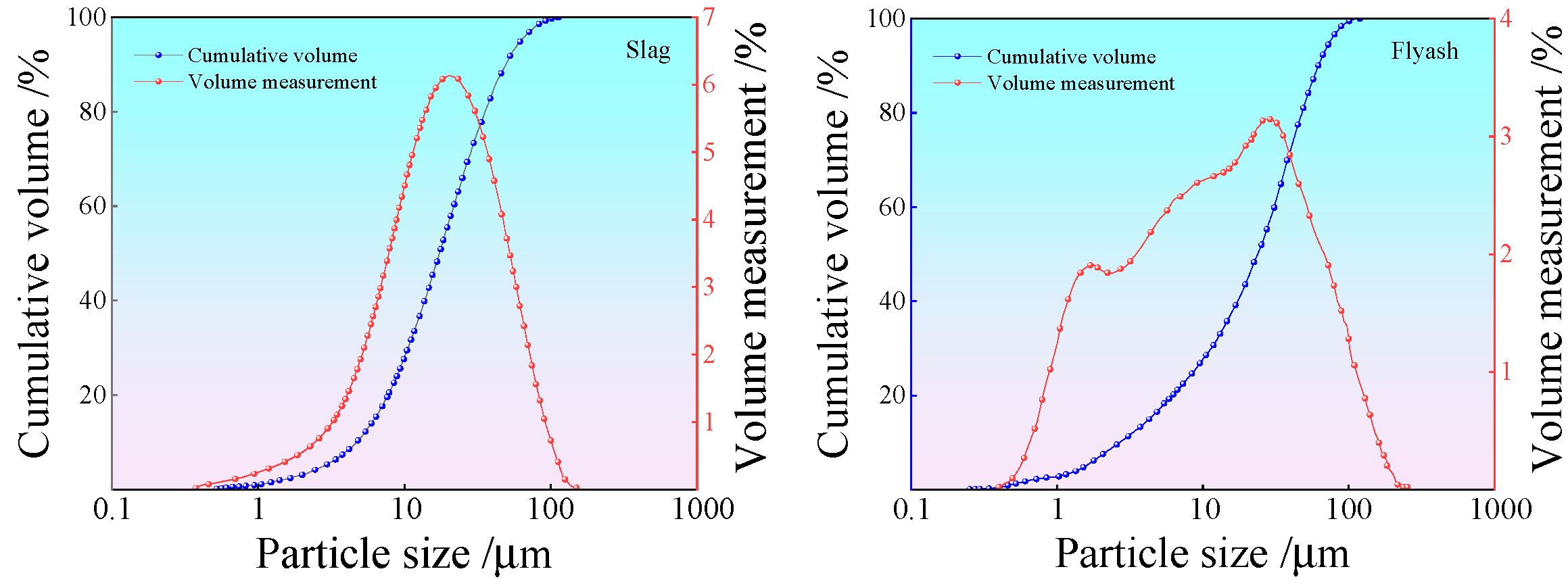

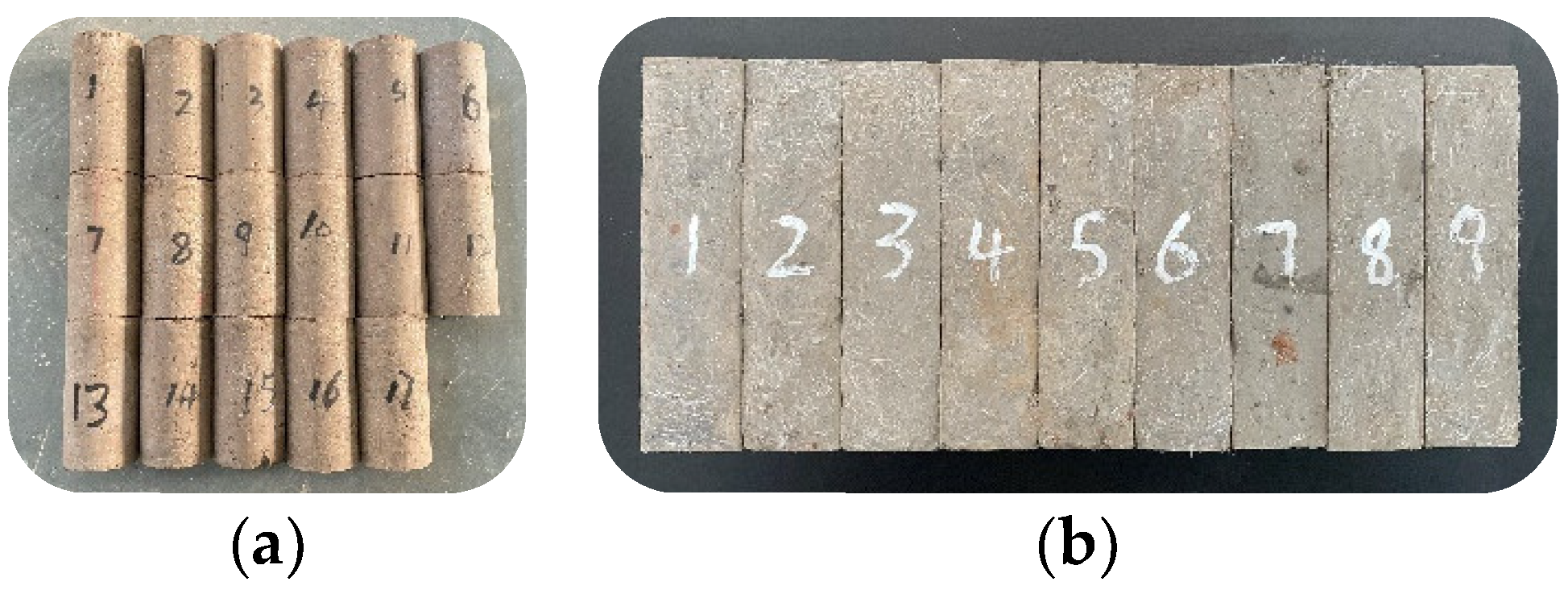
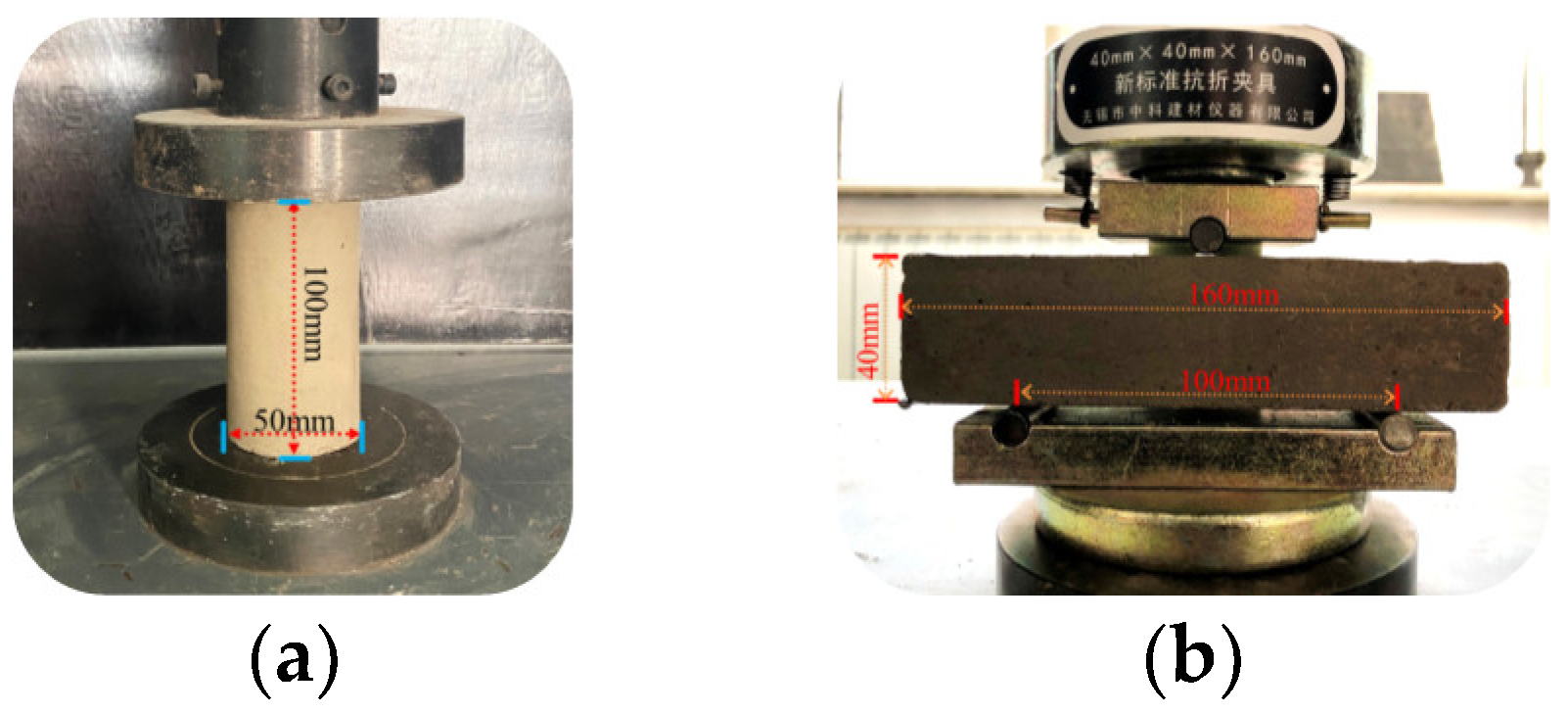

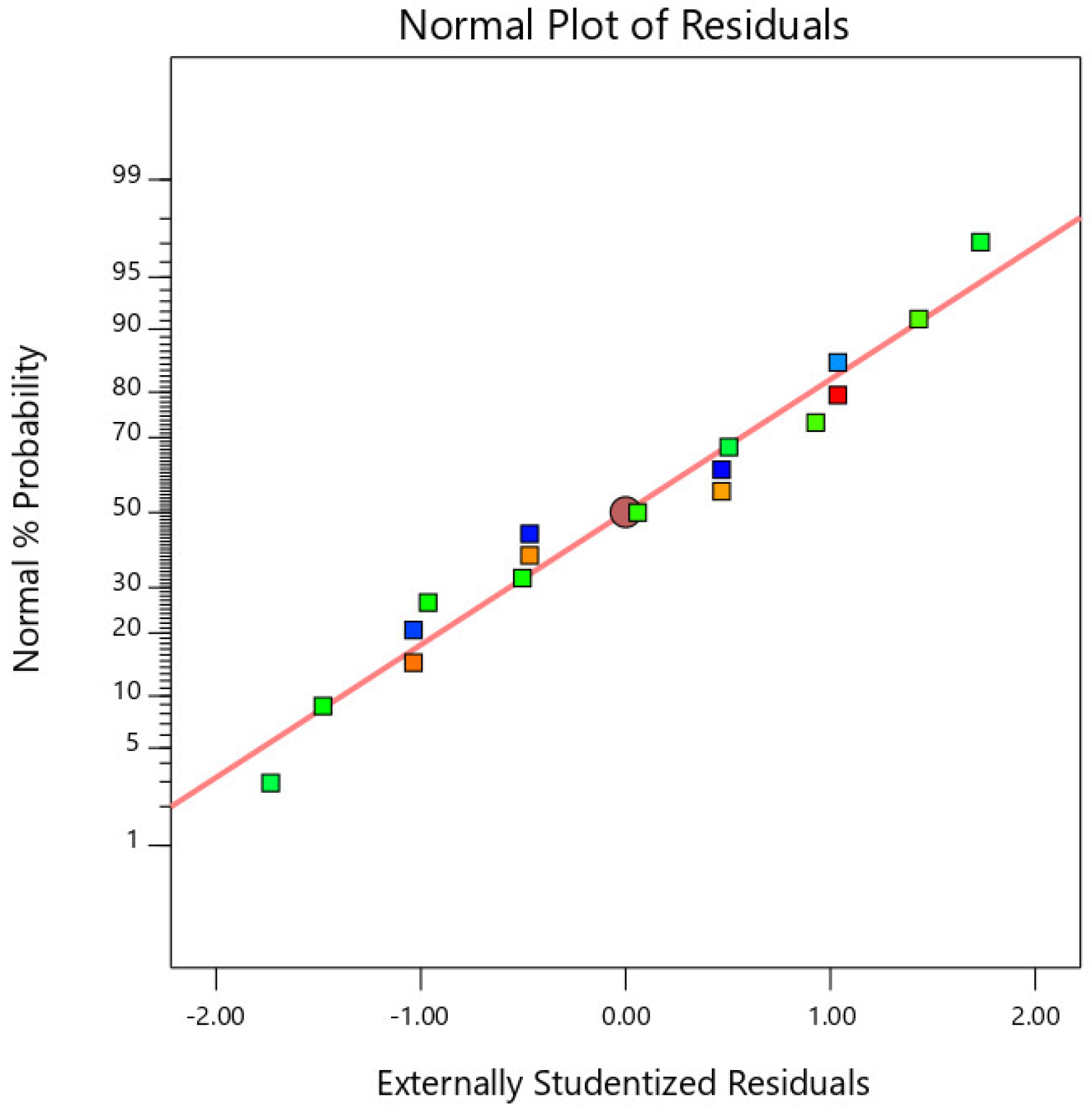
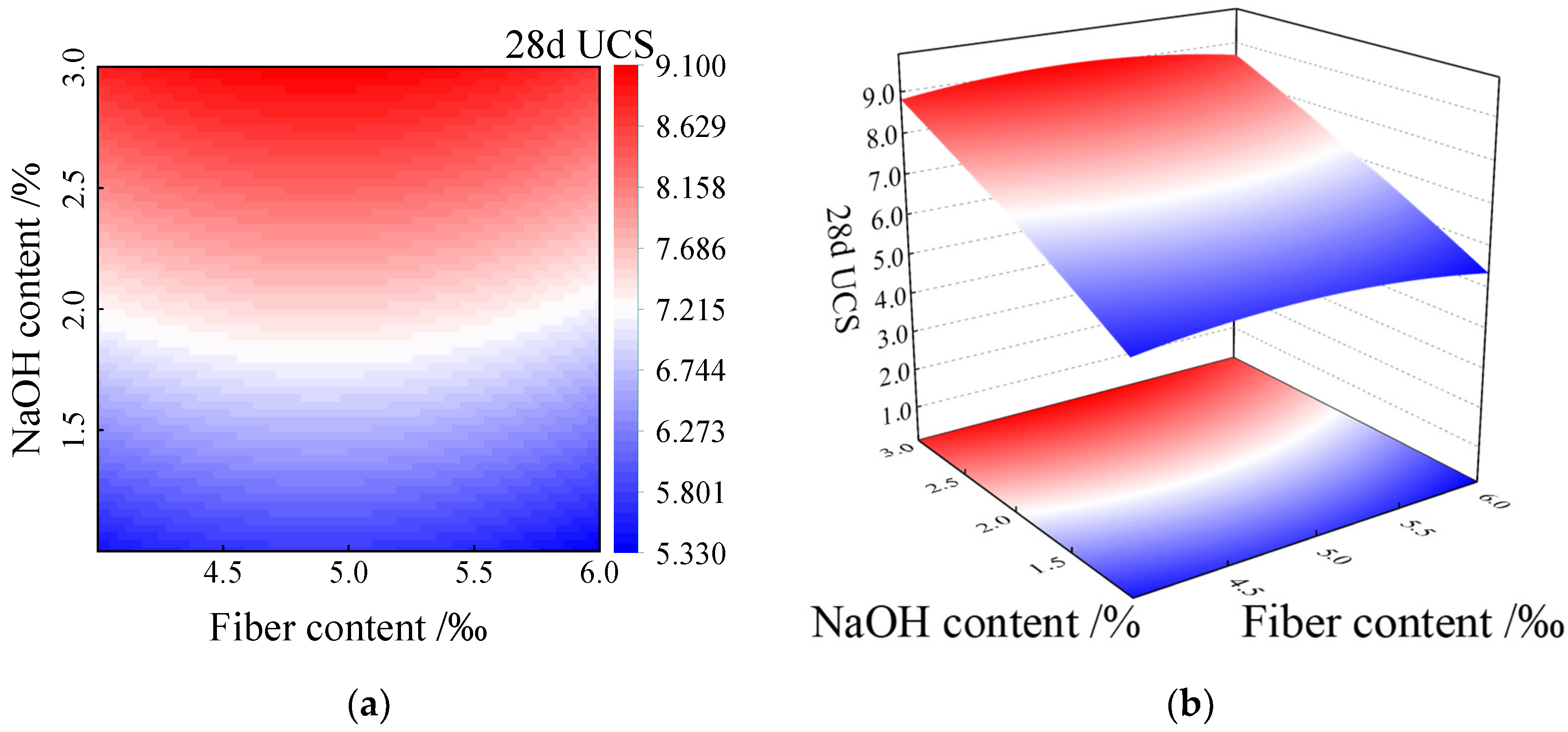
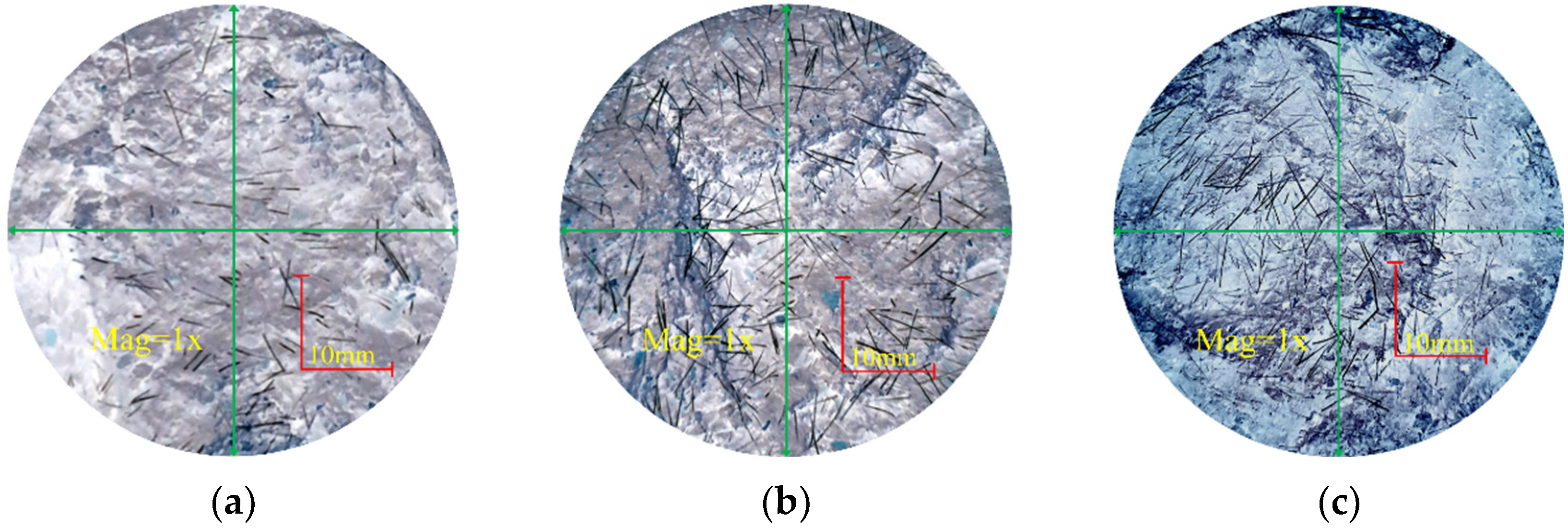
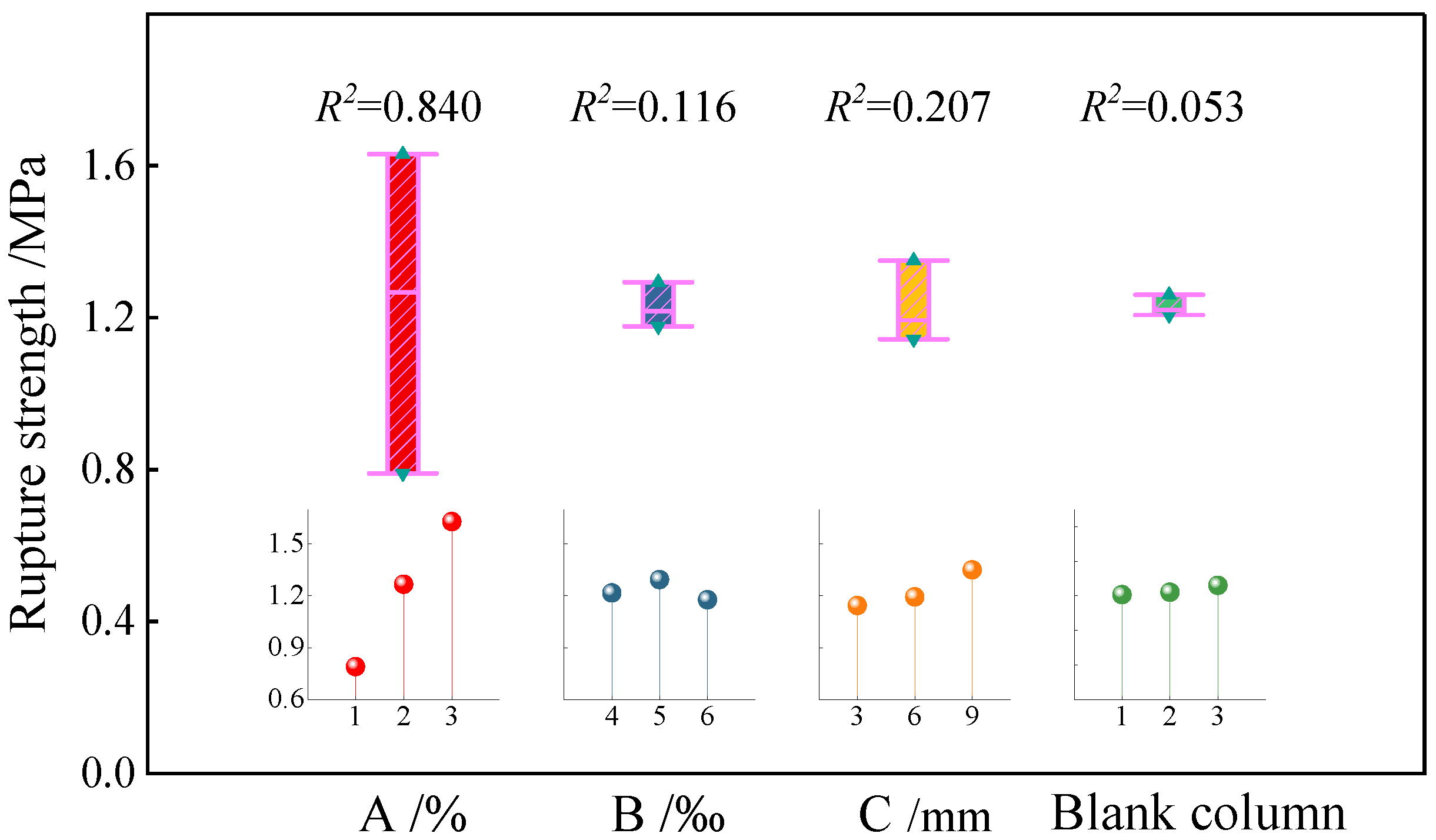

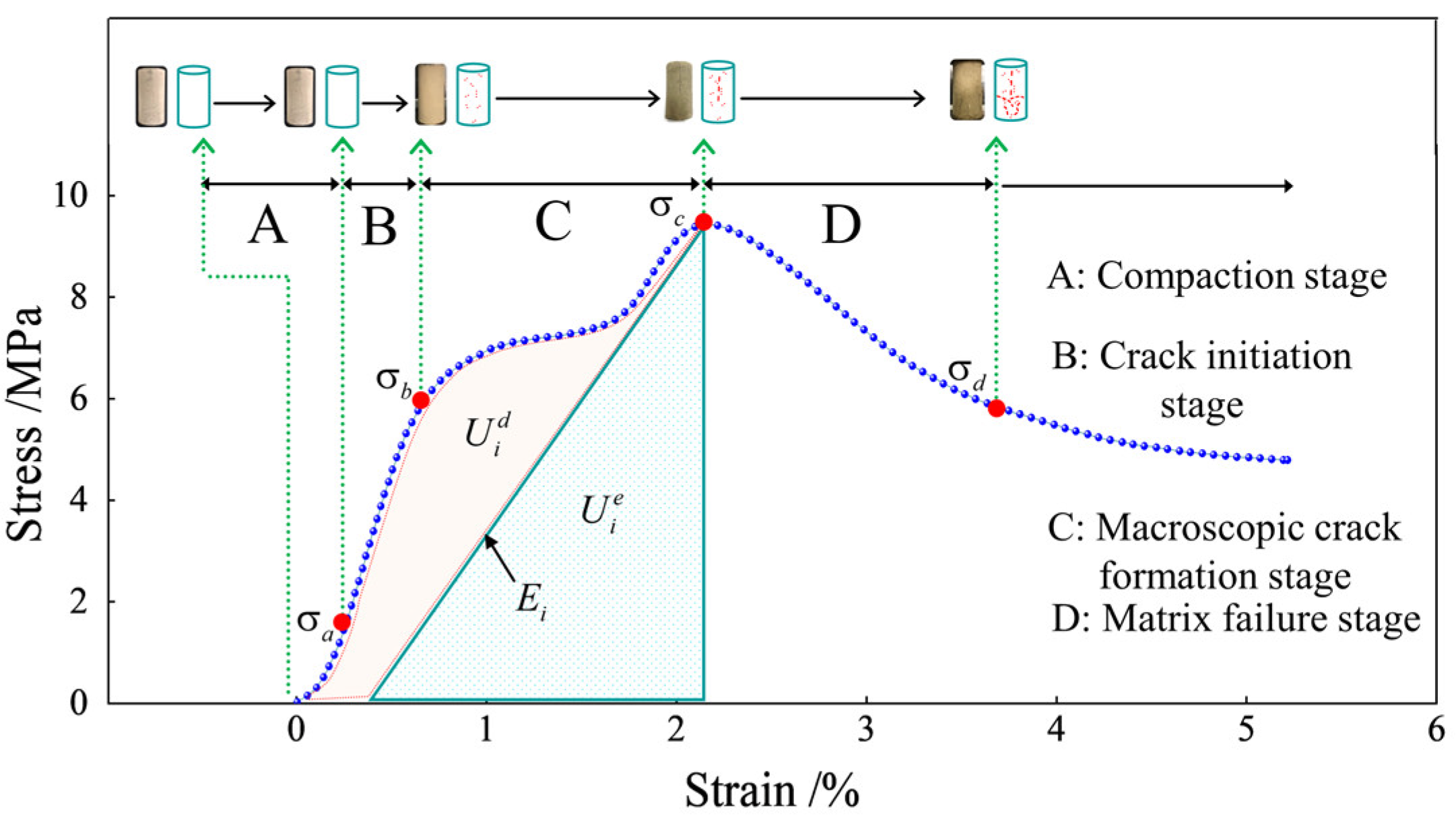




| Component | SiO2 | Al2O3 | Fe2O3 | CaO | MgO | SO3 | Ignition Loss |
|---|---|---|---|---|---|---|---|
| Content/% | 48.78 | 21.86 | 5.38 | 3.87 | 0.82 | 0.16 | 0.79 |
| Serial Number | Item | Parameter |
|---|---|---|
| 1 | Density grade (kg/m3) | 1100 |
| 2 | Compressive strength of concrete cylinder (MPa) | 6.0 |
| 3 | Softening index | 0.94 |
| 4 | Loss of boiling quality (%) | 2.3 |
| 5 | Soil content (%) | 0.64 |
| 6 | Organic content | Up to standard |
| 7 | Needle-like content (%) | 7.85 |
| 8 | Tamping density (kg/m3) | 1550 |
| 9 | Tap density (kg/m3) | 1620 |
| 10 | Crushing value (%) | 16.50 |
| 11 | Water absorption (%) | 8.5 |
| 12 | Apparent density (kg/m3) | 2077 |
| 13 | Percentage of void (%) | 22 |
| Chemical Composition | CaO | Fe2O3 | SiO2 | Al2O3 | MgO | Na2O | K2O | SO3 | FeO | S |
|---|---|---|---|---|---|---|---|---|---|---|
| Flyash | 4.13 | 3.77 | 58.79 | 25.12 | 0.45 | 0.98 | 1.15 | 0.39 | - | - |
| Slag | 44.36 | 0.38 | 33.25 | 13.27 | 6.31 | 0.33 | 0.28 | - | 0.89 | 1.1 |
| Density/g·cm−3 | Specific Surface Area/m2·kg−1 | Burning Vector/% | Chlorion/% | Mobility Ratio/% | Water Content/% |
|---|---|---|---|---|---|
| 2.9 | 428 | 0.21 | 0.024 | 109 | 0.32 |
| Type | Density/g·cm−3 | Tensile Strength/MPa | Elastic Modulus/GPa | Melting Point/°C | Ignition Point/°C | Fracture Elongation/% | Dispersibility |
|---|---|---|---|---|---|---|---|
| Bundle monofilament | 0.91 | ≥300 | ≥3.5 | 165 | 590 | ≥15 | Fabulous |
| Level | Factor | ||
|---|---|---|---|
| A | B | C | |
| 1 | 1 | 4 | 3 |
| 2 | 2 | 5 | 6 |
| 3 | 3 | 6 | 9 |
| Sample | NaOH Content/% | Fibber Content/‰ | Fibber Length/mm | 28 d UCS/MPa |
|---|---|---|---|---|
| S1 | 2 | 6 | 3 | 7.11 |
| S2 | 1 | 5 | 9 | 5.94 |
| S3 | 1 | 6 | 6 | 5.37 |
| S4 | 2 | 4 | 3 | 7.21 |
| S5 | 1 | 4 | 6 | 5.45 |
| S6 | 1 | 5 | 3 | 5.62 |
| S7 | 3 | 4 | 6 | 8.78 |
| S8 | 2 | 6 | 9 | 7.12 |
| S9 | 2 | 5 | 6 | 7.35 |
| S10 | 2 | 5 | 6 | 7.4 |
| S11 | 2 | 5 | 6 | 7.53 |
| S12 | 2 | 5 | 6 | 7.69 |
| S13 | 3 | 6 | 6 | 8.71 |
| S14 | 3 | 5 | 3 | 8.89 |
| S15 | 3 | 5 | 9 | 9.34 |
| S16 | 2 | 4 | 9 | 7.42 |
| S17 | 2 | 5 | 6 | 7.64 |
| Source | Sum of Squares | df | Mean Square | F-Value | p-Value | |
|---|---|---|---|---|---|---|
| Model | 22.97 | 9 | 2.55 | 128.98 | <0.0001 | significant |
| A-A | 22.24 | 1 | 22.24 | 1124.02 | <0.0001 | |
| B-B | 0.0420 | 1 | 0.0420 | 2.12 | 0.1883 | |
| C-C | 0.1152 | 1 | 0.1152 | 5.82 | 0.0466 | |
| AB | 0.0000 | 1 | 0.0000 | 0.0013 | 0.9726 | |
| AC | 0.0042 | 1 | 0.0042 | 0.2135 | 0.6581 | |
| BC | 0.0132 | 1 | 0.0132 | 0.6683 | 0.4406 | |
| A2 | 0.0440 | 1 | 0.0440 | 2.22 | 0.1795 | |
| B2 | 0.4932 | 1 | 0.4932 | 24.92 | 0.0016 | |
| C2 | 0.0032 | 1 | 0.0032 | 0.1638 | 0.6977 | |
| Residual | 0.1385 | 7 | 0.0198 | |||
| Lack of Fit | 0.0519 | 3 | 0.0173 | 0.7976 | 0.5561 | not significant |
| Pure Error | 0.0867 | 4 | 0.0717 | |||
| Cor Total | 23.11 | 16 |
| Sample Number | A/% | B/‰ | C/mm | Blank Column | Rupture Strength/MPa |
|---|---|---|---|---|---|
| F1 | 1 | 4 | 3 | 1 | 0.67 |
| F2 | 1 | 5 | 6 | 2 | 0.81 |
| F3 | 1 | 6 | 9 | 3 | 0.89 |
| F4 | 2 | 4 | 6 | 3 | 1.25 |
| F5 | 2 | 5 | 9 | 1 | 1.43 |
| F6 | 2 | 6 | 3 | 2 | 1.12 |
| F7 | 3 | 4 | 9 | 2 | 1.73 |
| F8 | 3 | 5 | 3 | 3 | 1.64 |
| F9 | 3 | 6 | 6 | 1 | 1.52 |
| Factor | Square of Deviance | Freedom | F-Ratio | F-Critical Value | Significance |
|---|---|---|---|---|---|
| A | 1.065 | 2 | 3.669 | 3.110 | * |
| B | 0.021 | 2 | 0.072 | 3.110 | |
| C | 0.070 | 2 | 0.241 | 3.110 | |
| Blank column | 0.005 | 2 | 0.017 | 3.110 | |
| Error | 1.16 | 8 |
| E/GPa | Kn/Ks | μ | n | ρ/kg·m−3 | ν |
|---|---|---|---|---|---|
| 23.085 | 1.0 | 0.5 | 0.3 | 2450 | 0.2 |
| Sample | NaOH Content/% | Fibber Content/‰ | Fibber Length/mm | |||
|---|---|---|---|---|---|---|
| S1 | 2 | 6 | 3 | 8377.59 | 5290.11 | 3087.48 |
| S2 | 1 | 5 | 9 | 7453.62 | 4931.35 | 2522.27 |
| S3 | 1 | 6 | 6 | 6992.14 | 4212.26 | 2779.88 |
| S4 | 2 | 4 | 3 | 8759.03 | 5672.04 | 3086.99 |
| S5 | 1 | 4 | 6 | 7189.29 | 4398.15 | 2791.14 |
| S6 | 1 | 5 | 3 | 7301.58 | 4479.29 | 2822.29 |
| S7 | 3 | 4 | 6 | 11,218.66 | 8189.14 | 3029.52 |
| S8 | 2 | 6 | 9 | 8476.34 | 6257.31 | 2219.03 |
| S9 | 2 | 5 | 6 | 9421.59 | 6405.29 | 3016.3 |
| S10 | 2 | 5 | 6 | 9537.68 | 6472.17 | 3065.51 |
| S11 | 2 | 5 | 6 | 9508.41 | 6453.27 | 3055.14 |
| S12 | 2 | 5 | 6 | 9471.68 | 6440.19 | 3031.49 |
| S13 | 3 | 6 | 6 | 10,957.22 | 7450.94 | 3506.28 |
| S14 | 3 | 5 | 3 | 11,492.09 | 8274.33 | 3217.76 |
| S15 | 3 | 5 | 9 | 12,870.78 | 10,156.53 | 2714.25 |
| S16 | 2 | 4 | 9 | 9153.85 | 6199.84 | 2954.01 |
| S17 | 2 | 5 | 6 | 9379.61 | 6398.52 | 2981.09 |
Disclaimer/Publisher’s Note: The statements, opinions and data contained in all publications are solely those of the individual author(s) and contributor(s) and not of MDPI and/or the editor(s). MDPI and/or the editor(s) disclaim responsibility for any injury to people or property resulting from any ideas, methods, instructions or products referred to in the content. |
© 2023 by the authors. Licensee MDPI, Basel, Switzerland. This article is an open access article distributed under the terms and conditions of the Creative Commons Attribution (CC BY) license (https://creativecommons.org/licenses/by/4.0/).
Share and Cite
Pang, S.; Zhang, X.; Zhu, K.; Li, J.; Su, L. Study on Mechanical Properties and Micro Characterization of Fibre Reinforced Ecological Cementitious Coal Gangue Materials. Polymers 2023, 15, 700. https://doi.org/10.3390/polym15030700
Pang S, Zhang X, Zhu K, Li J, Su L. Study on Mechanical Properties and Micro Characterization of Fibre Reinforced Ecological Cementitious Coal Gangue Materials. Polymers. 2023; 15(3):700. https://doi.org/10.3390/polym15030700
Chicago/Turabian StylePang, Shuai, Xiangdong Zhang, Kaixin Zhu, Jiaze Li, and Lijuan Su. 2023. "Study on Mechanical Properties and Micro Characterization of Fibre Reinforced Ecological Cementitious Coal Gangue Materials" Polymers 15, no. 3: 700. https://doi.org/10.3390/polym15030700





